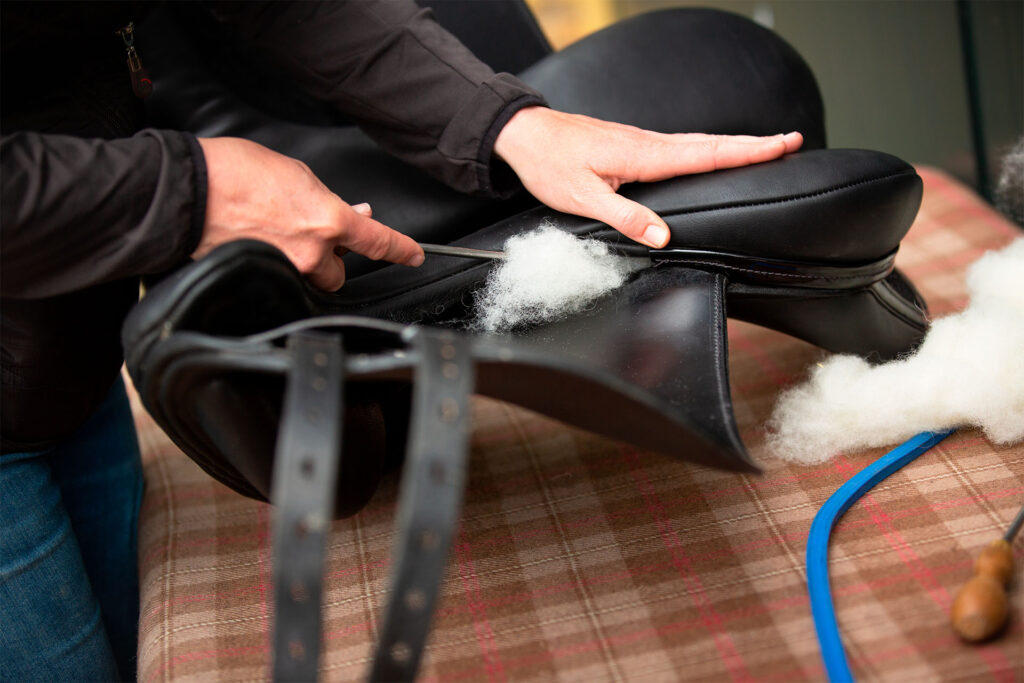- Seats
- Options
- Saddle options
- Saddle accessories
- Fryso Stirrup leathers
- Fryso Mono Stirrup leathers
- Fryso Stirrups
- Fryso Dressage Girth
- Fryso girth Anatomic
- Fryso girth Narrow
- Fryso Blankets
- Fryso Halter
- Fryso Foal Halter
- Fryso Bridles
- Fryso Saddle Cover
- Fryso Anniversary Saddle pad
- Fryso Max saddle pad
- Fryso Leather grease
- Fryso Care products
- Wintec Cair girth
- Wintec girth
- Prolite Tri Pad
- Half pads
- Saddle service
- Reviews
- News
How often should my saddle be filled?
The cushions of a saddle are usually filled with wool. Wool has resilient properties and distributes the pressure evenly over the horse's back. Over time, the wool can settle and it is possible that the saddle no longer fits optimally on the horse. The saddle must then be filled.
In addition, changes in the horse's condition can also cause the saddle to no longer fit properly.

- 100% Handmade
- Own fitting service
- +25 years of knowledge & experience
- Real English leather + 1 year warranty
- 5 year warranty on the tree
- Visit our equestrian shop >
Would you like to know more about our saddles or schedule a service appointment?
- webshop?
- www.tweespan.com
First fill
A new saddle is checked again by the saddle fitter upon delivery. Because the saddle is made of new leather and is completely filled with new wool, the material will form quickly. The time between the purchase of the saddle and the first filling can vary per horse, sometimes after a few weeks and sometimes after 1 year, depending on the use, the horse and the rider.
We recommend a half year after the first saddle check. Do you see a change in the position of the saddle very quickly? Then you can of course make an appointment earlier.
Annual top-up
In general, we recommend that you have your saddle checked/filled once a year.
Because a horse is a living being, it makes many changes in his body along. Maybe the horse gets more or less muscled, gets fatter or loses weight, gets a foal or maybe a condition that affects the condition. These are all factors that influence the shape of the back and thus the position of the saddle. Riding around with an ill-fitting saddle can cause not only discomfort but permanent damage in the long run. Not all horses will show obvious discomfort when ridden with an ill-fitting saddle. That is why an annual check-up is highly recommended.
The training of a horse can be done in all kinds of ways, but that this happens flawlessly is of course the case with almost no one. When a horse is more developed on one side than the other, the saddle will adapt accordingly, and eventually to lie crooked. This is also the case when a rider sits unevenly, crookedly, or is unable to distribute the weight completely evenly. A saddle whose filling has become uneven must always be straightened again, otherwise the saddle itself can become irreparably crooked in the long run, and of course because the horse can experience discomfort from it.



Share: